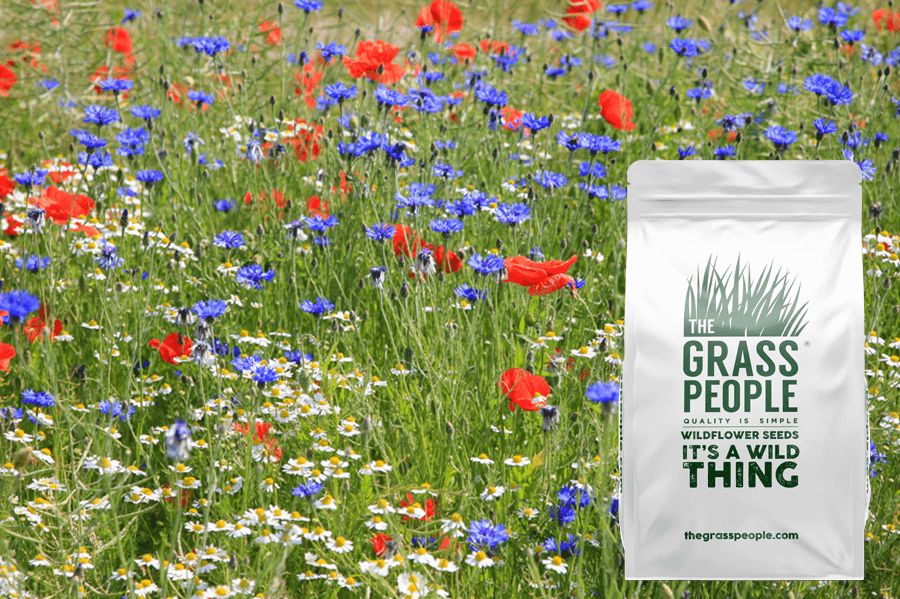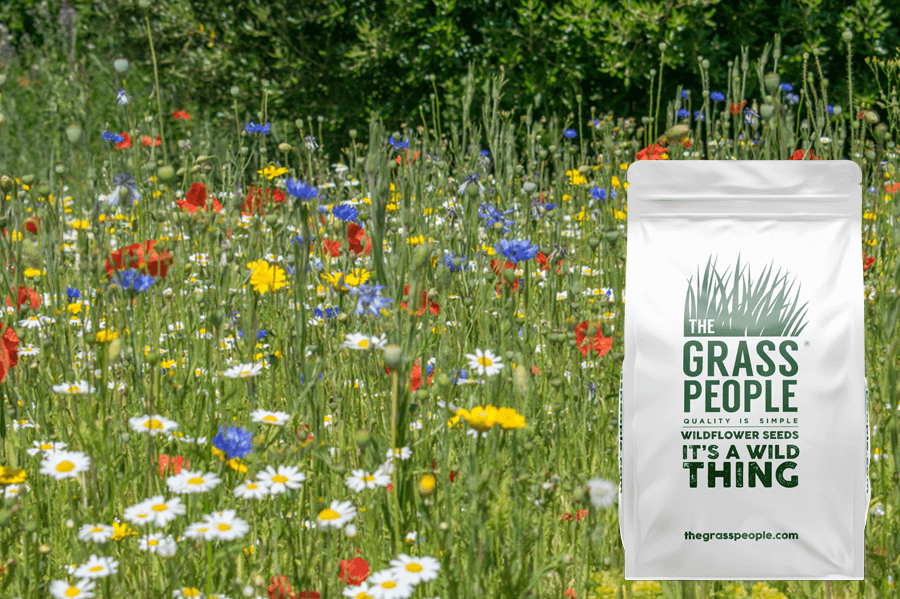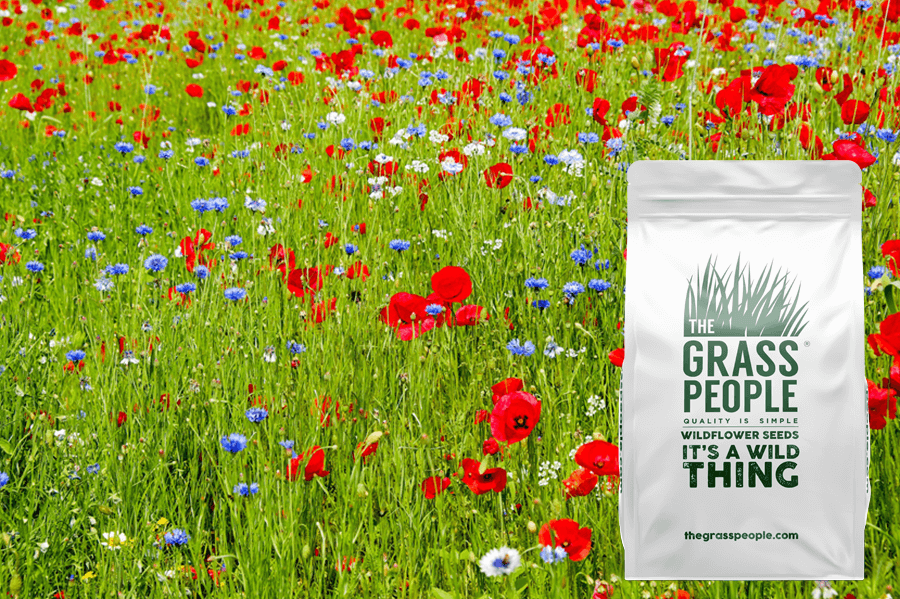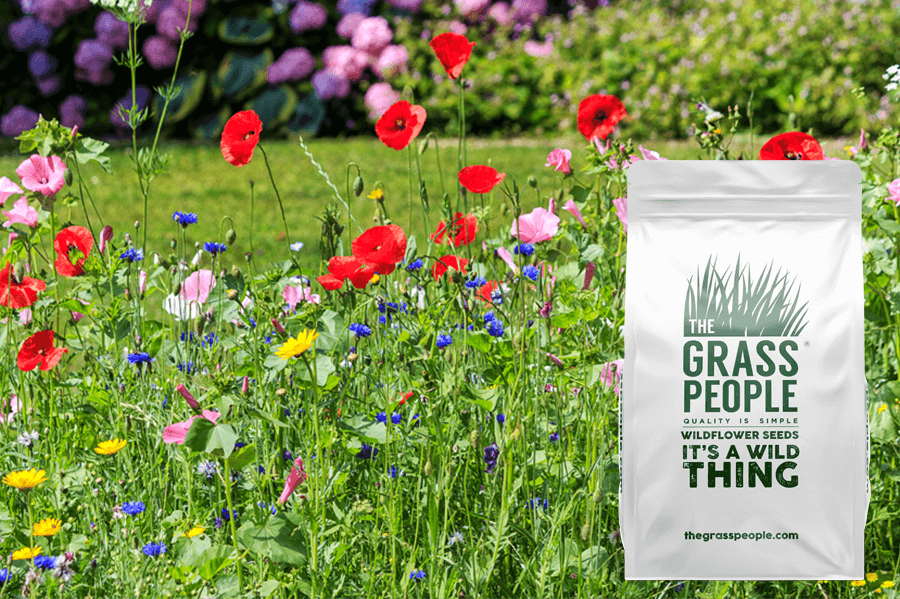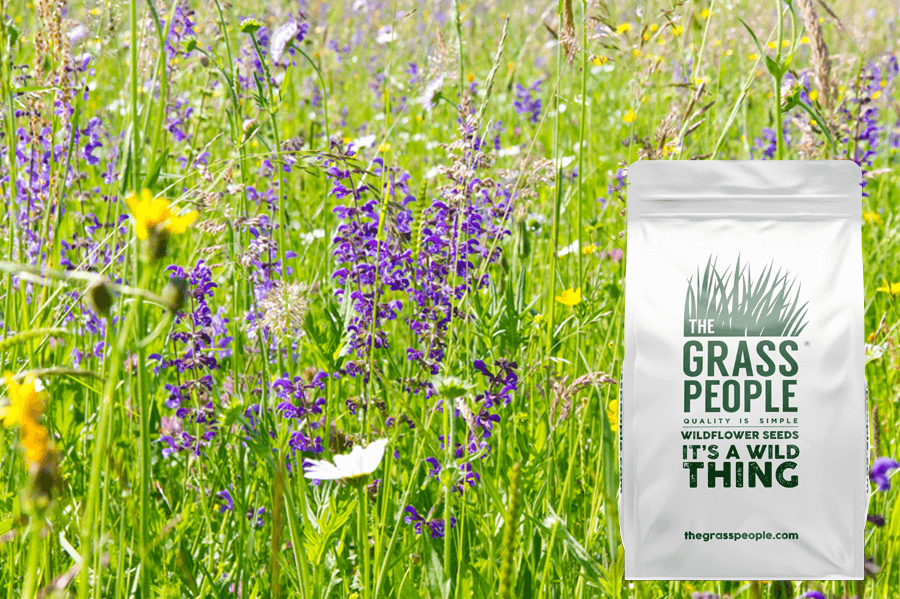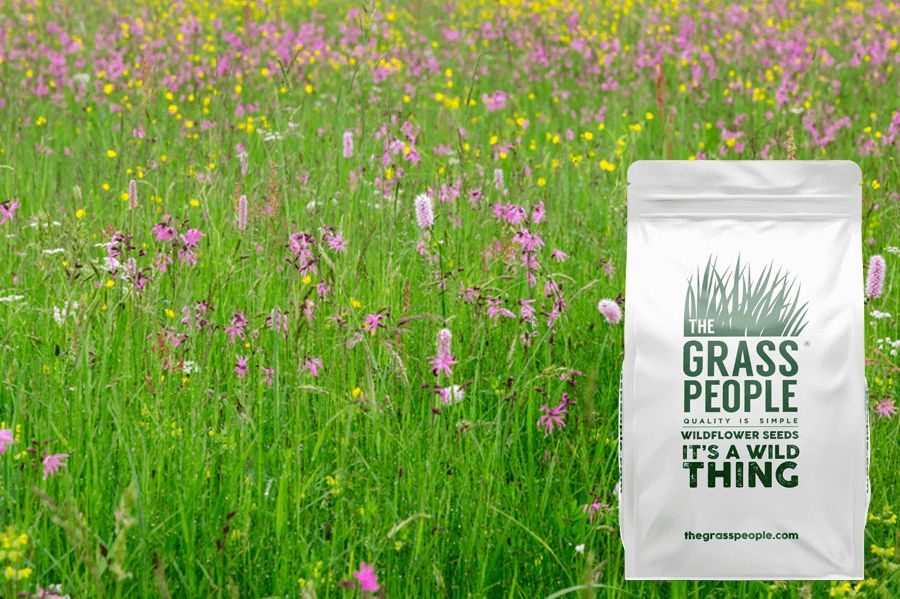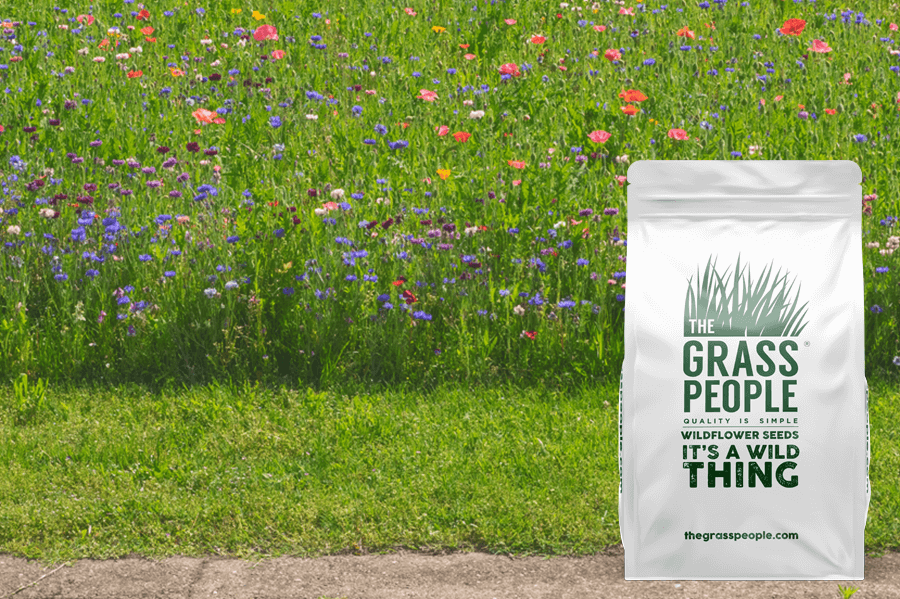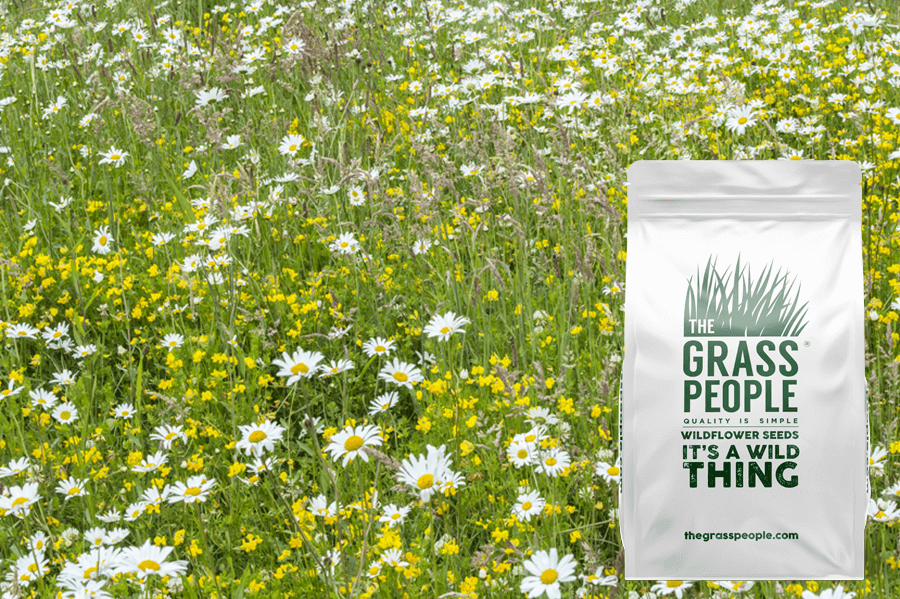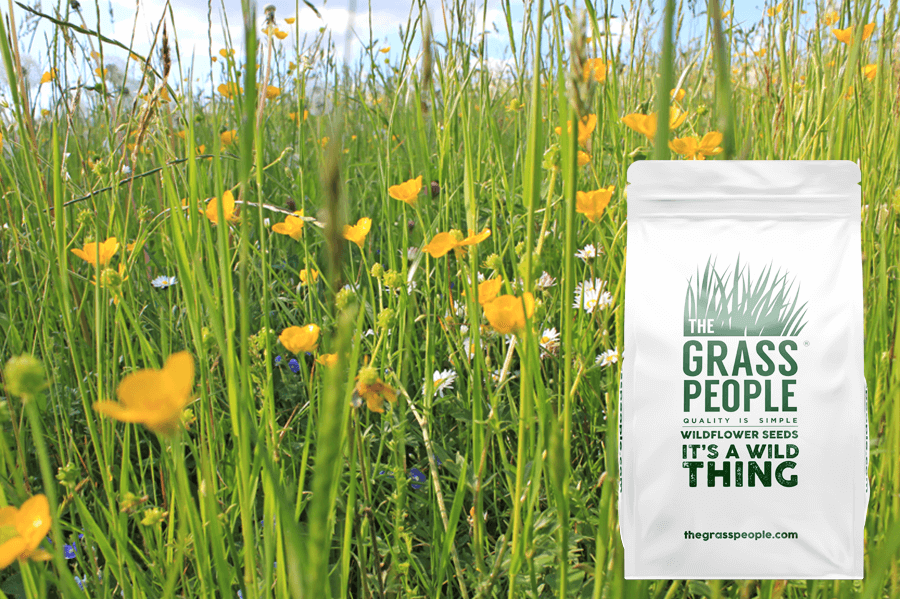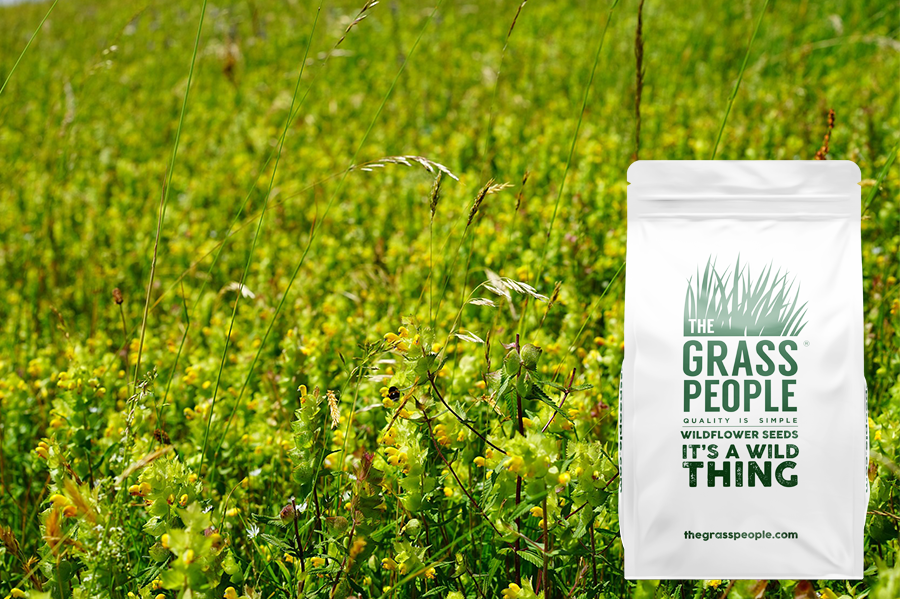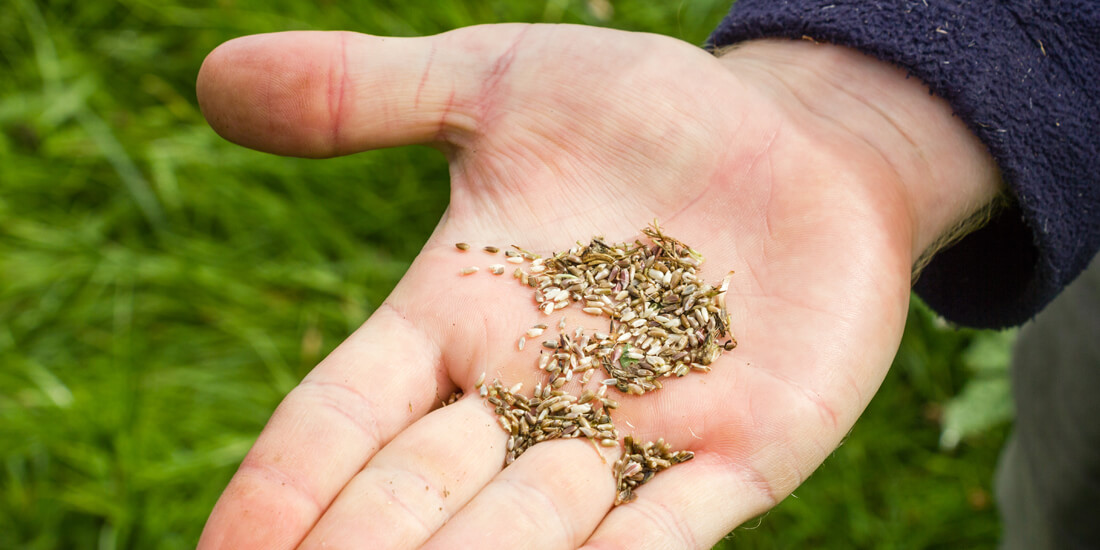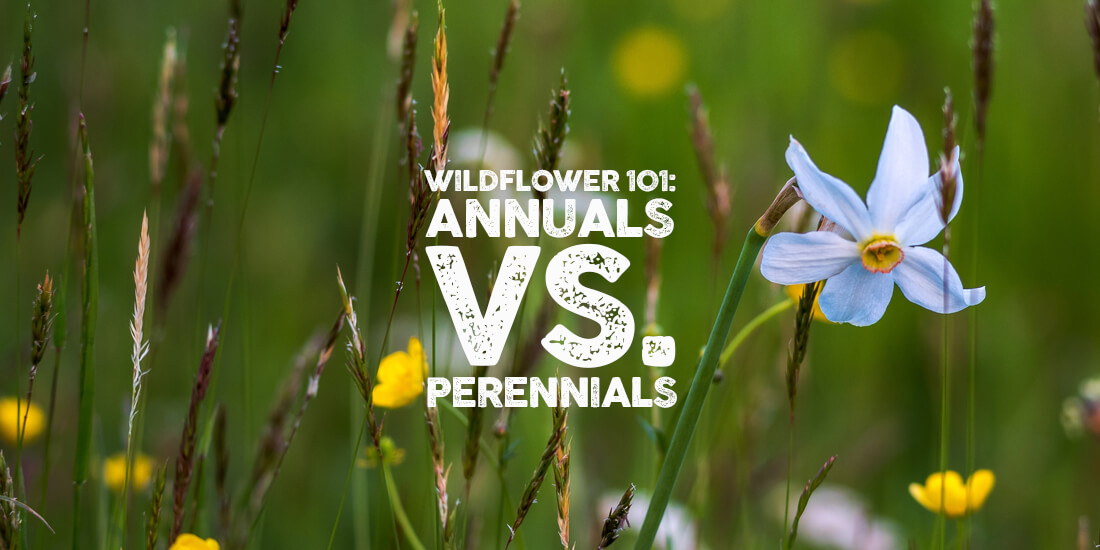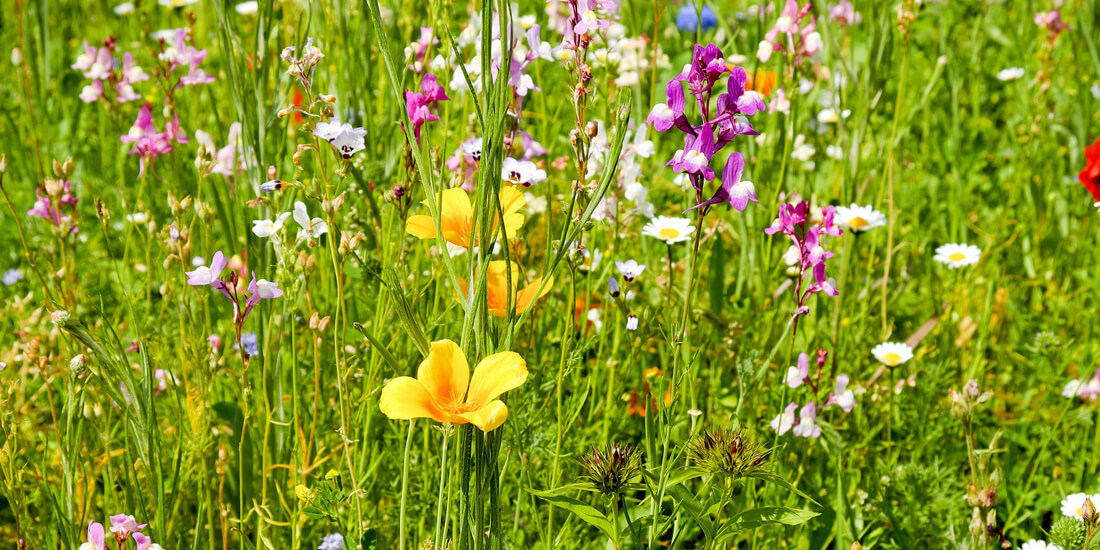Our A - Z Wildflowers Guide
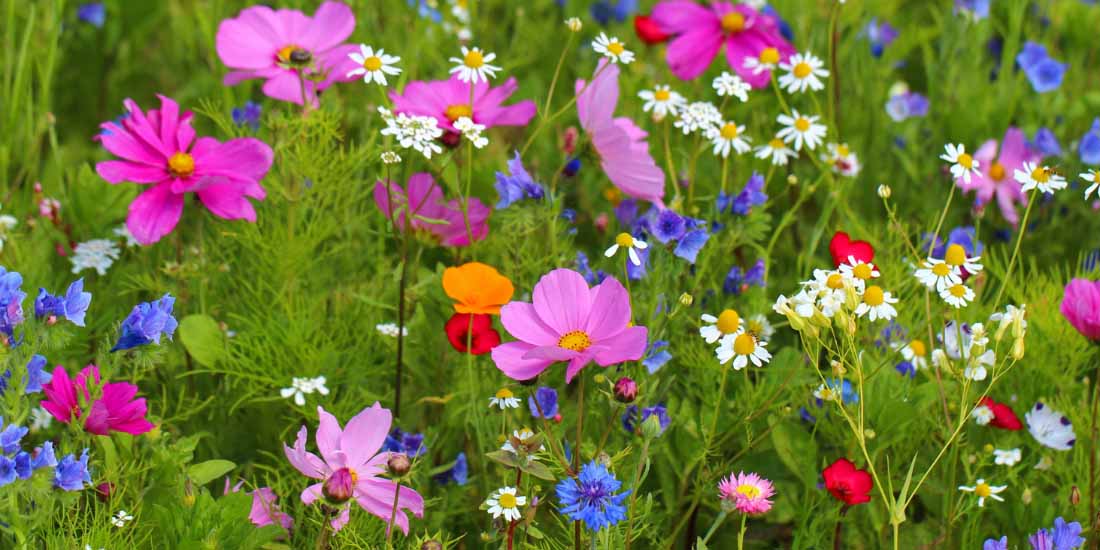
Welcome to our A – Z list of wildflowers that we use in our wildflower seed mixes. Wildflowers offer a convenient and exciting way to bring a burst of colour and life to your garden or outdoor space. So, if you're a nature enthusiast, gardening lover, or simply someone who appreciates the beauty of wildflowers, you've come to the right place!
From vibrant meadows to enchanting cottage gardens, wildflower seed mixes have become increasingly popular due to their versatility and ecological benefits. Whether you're looking to attract pollinators like butterflies and bees, create a serene and picturesque landscape, or even restore a natural habitat, our wildflower guide will help you find the wildflowers out there for you!
Our wildflowers guide below features a list of all the wildflowers we use in our seed mixtures. Along with information on whether they are annual or perennial species, we have included when they typically bloom, their colour and a brief description outlining each wildflower.
You can click on the names of the wildflowers below, and you will be brought to the relevant information:
Betony
Stachys officinalis
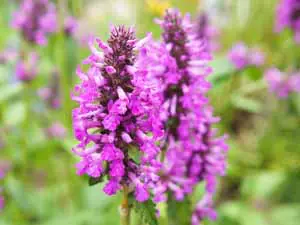
Betony is related to the nettle family and produces bright magenta blooms. It is thought that when you see Betony, it indicates that ancient woodlands are near.
Annual or Perennial? Perennial
When does it bloom? June - October
What colour is it? Purple
Included in: Shaded Areas
Birdsfoot Trefoil
Lotus corniculatus
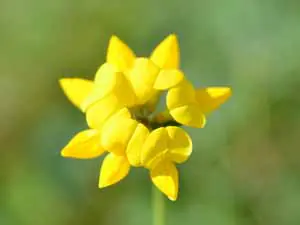
Birdsfoot Trefoil is part of the pea family and grows up to 35cm. It is well known for its yellow slipper-like petals and red centre, which has given it the nickname of 'Eggs and Bacon'!
Annual or Perennial? Perennial
When does it bloom? May - September
What colour is it? Yellow / Red
Included in: Meadow Magic, Bees & Pollinators, Flowering Meadow, Sandy Soils
Black Medick
Medicago lupulina
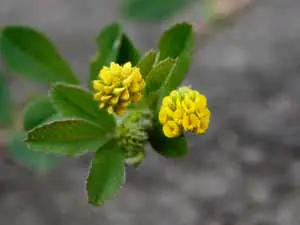
Despite its name, Black Medick is actually a yellow wildflower that resembles a clover. Just like a clover, it is exceptionally good at attracting bees and pollinators and, due to its 'sprawling' ability, is particularly good at thriving in clay soils.
Annual or Perennial? Perennial
When does it bloom? April - July
What colour is it? Yellow
Included in: Heavy Clay, Sandy Soils
Bluebell
| Hyacinthoides non-scripta |
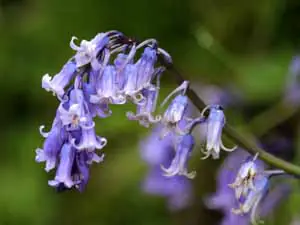
|
The Bluebell is one of the most easily recognisable wildflowers, and it only shows its face for a short time each year! How can you not love this woodland wildflower that can often grow underneath trees or dark, moist spaces? Sadly, native UK bluebells are under threat from Spanish Bluebells, which are a lot more ruthless in their rooting. Luckily, you can find UK native Bluebell in our Shaded Area Wildflower Mix. Included in: Shaded Areas |
Bugle
| Ajuga reptans |
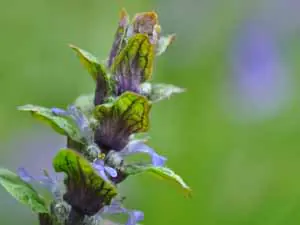
|
Bugle is sometimes called carpet weed for its creeping ability to 'carpet' a forest floor with its dark purple blooms. Whilst bees keep this wildflower on their radar, it's a firm favourite with butterflies. Included in: Shaded Areas |
Catsear Wildflowers
| Hypochaeris radicata |
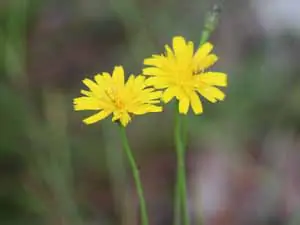
|
Catsear is a dandelion-like perennial wildflower. The way to tell the difference between a dandelion and Catsear is that Catsear does not have the distinctive leaves that a dandelion does! |
Common Knapweed
| Centaurea nigra |
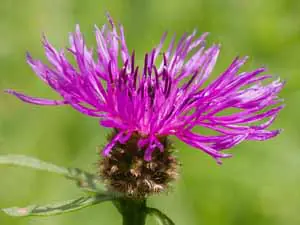
|
Common knapweed can be mistaken for a thistle before it blooms, and once it does, it has magnificent starburst purple petals that resemble a fireworks display! Included in: Meadow Magic, Bees & Pollinators, Flowering Meadow, Heavy Clay |
Common Sorrel
| Rumex acetosa |
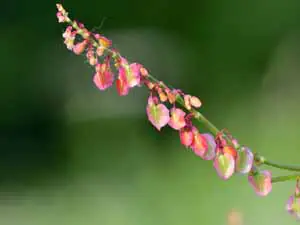
|
Common Sorrel is a perennial plant that thrives in clay conditions. Although its leaves are green, they often turn red and pink, offering a pop of colour to your meadow. Included in: Heavy Clay |
Common Vetch
| Vicia sativa ssp. Segetalis |
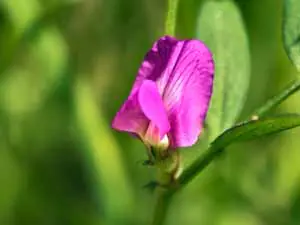
|
Common Vetch produces delicate purple flowers that make it a very desirable wildflower. It is considered a 'scrambling plant', which means it makes an extra special effort to climb to the sun and weave its way above many other wildflowers. Included in: Bees & Pollinators |
Corn Chamomile
| Anthemis arvensis |
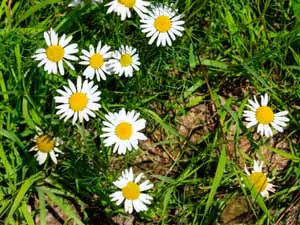
|
Although Corn Chamomile looks like a daisy, it is part of the cornfield annuals family. Its flat and almost level surface makes it the perfect pit-stop for bees and pollinators. Included in: Annuals, Meadow Magic, Flowering Meadow |
Corn Marigold
| Glebionis segetum |
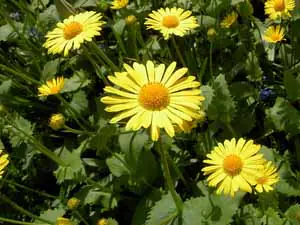
|
Corn Marigold is a bright ray of sunshine on a gloomy day. Its orange-yellow petals burst into life in June and last all the way through until October. Part of the cornfield annuals family, although this annual may have one showing - it's a showstopper! Included in: Meadow Magic, Bees & Pollinators, Flowering Meadow, Shaded Areas |
Corn Poppy
| Papaver rhoeas |
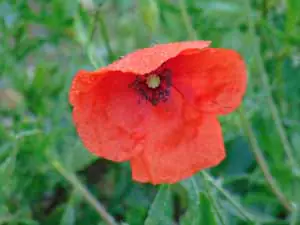
|
One of the most recognisable and elegant wildflowers. The Corn Poppy is a vibrant and bright addition to any meadow and is easily recognisable and identifiable throughout the UK. Of course, it has meaning for many and also adds a colourful pop to any wildflower plot. Included in: Annuals, Meadow Magic, Bees & Pollinators, Flowering Meadow |
Corncockle
| Agrostemma githago |
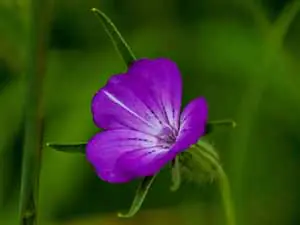
|
Corncockle is a pretty purple wildflower with tall stems and full petals and is a bright addition to any annual wildflower mix. It is currently rare and endangered. Included in: Annuals, Meadow Magic, Flowering Meadow, Shaded Areas |
Cornflower
| Centaurea cyanus |
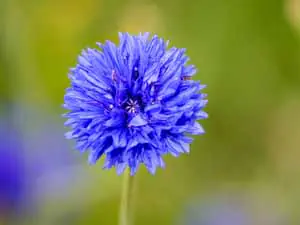
|
Cornflower was previously considered a weed amongst its cornfield annuals companions but is now accepted and widely praised as one of the finest around, and it is also one of our favourite wildflowers! Who can refuse those electric blue blooms? Included in: Annuals, Meadow Magic, Bees & Pollinators, Flowering Meadow |
Cow Parsley
| Anthriscus sylvestris |
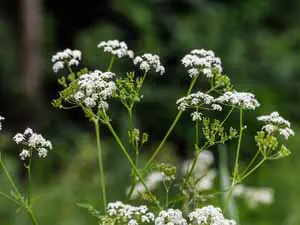
|
Cow Parsley is a shade-tolerant wildflower that naturally grows in woodland areas, and its stem branches out into many clusters of tiny white flowers. It is sometimes referred to as 'Queen Anne's Lace' as it was said it would bloom for Queen Anne and her ladies in waiting and resembled the lace on their dresses. Included in: Bees & Pollinators |
Cowslip Wildflowers
| Primula veris |
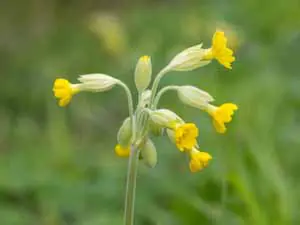
|
Cowslip doesn't get its name from hap-hazard calamity cows, but instead from the places where it was often found to grow - where cows had recently gone to the bathroom! Its bright yellow buds add a pop of colour to any meadow. Included in: Bees & Pollinators |
Creeping Buttercup
| Ranunculus repens |
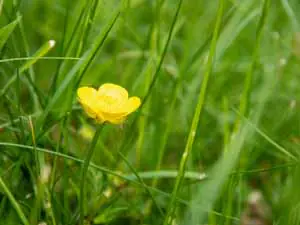
|
With all those lovely yellow petals, what's so creepy about this pretty perennial? Well, if left to flourish, it can take over. But if sown in with a sward of other wildflower seeds, it'll keep to its own! Creeping buttercup is great at establishing in weak soils. |
Dandelion
| Taraxacum officinale |
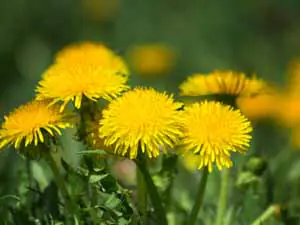
|
Although it may be most people's worst nightmare, dandelions are a great pollen source for bees and butterflies alike and shouldn't be overlooked. Providing a pop of colour to your meadow, dandelions are diverse and will grow in most soil conditions. Included in: Bees & Pollinators |
Dark Mullein
| Verbascum nigrum |
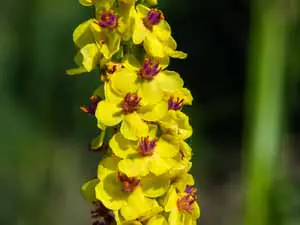
|
Dark Mullein is a very tall wildflower that is used to growing in dry places - so it is ideal for sandy soils. We love its large yellow petals and purple centre. Included in: Sandy Soils |
Evening Primrose
| Oenothera biennis |
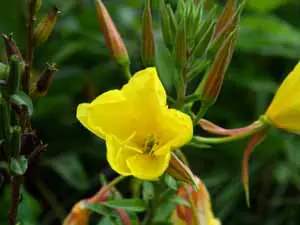
|
Evening Primrose is a buttercup-like perennial that is well known for its medicinal benefits. While Evening Primrose Oil's sole ingredient may be useful for some ailments, it's also particularly pretty to look at! Included in: Bees & Pollinators |
Field Scabious
| Knautia arvensis |
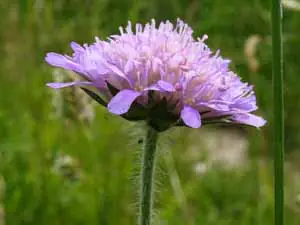
|
Field Scabious is a little lilac perennial wildflower species with a flat surface - perfect for bees to land on! This surface is what gives Field Scabious its nickname of 'Lady's Pincushion' as its blooms spike out from its cushion centre. Included in: Bees & Pollinators |
Foxglove Wildflowers
| Digitalis purpurea |
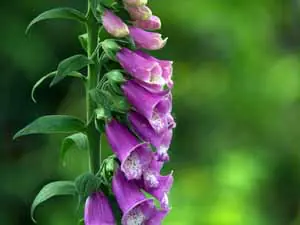
|
Foxgloves are biennial wildflowers that, when sown, will reward you with blooms for two whole years. Their bright pink/purple bells attract bees and pollinators who tunnel in to feed on its nectar. Included in: Flowing Meadow, Shaded Areas, Meadow Magic, Bees & Pollinators |
Garlic Mustard
| Alliaria petiolata |
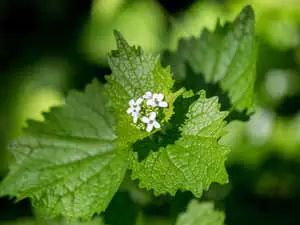
|
Garlic Mustard is a pretty white perennial that can be typically found in hedgerows and woodland, where it thrives in dark and moist soils. If you're wondering how it got Garlic in its name, when its leaves are crushed, they smell of it! Included in: Shaded Areas, Bees & Pollinators |
Gorse Wildflowers
Ulex
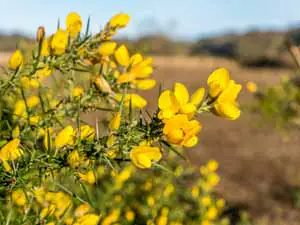
|
It is said that kissing is out of season when Gorse is out of bloom! The saying comes from its ability to bloom all year - meaning kissing is always on the cards. With its vanilla and coconut-y scent and bright yellow flora, we're glad this is one of the perennial wildflowers that never goes out of bloom! Included in: Sandy Soils |
Greater Knapweed
| Centaurea scabiosa |
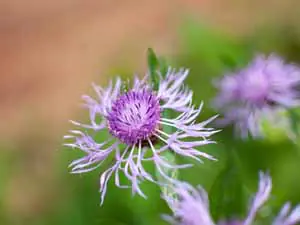
|
Greater Knapweed is larger than Common Knapweed, with distinctly larger flower heads. Like its smaller sibling, Greater Knapweed is a vital food source for bees and pollinators. Included in: Bees & Pollinators |
Greater Stitchwort
| Stellaria holostea |
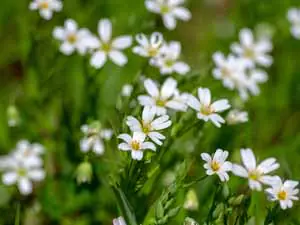
|
Greater Stitchwort has a funny nickname - Daddy's Shirt Buttons! This is because when it disperses its seeds, they pop open! This white wildflower has a star-like appearance with five petals that split into two, making it a very special wildflower to come across in woodland areas. Included in: Shaded Areas |
Harebell
| Campanula rotundifolia |
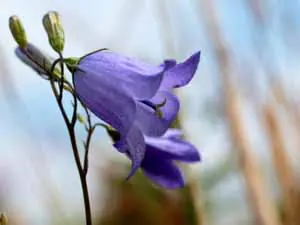
|
With its periwinkle petals and delicate appearance, Harebell won't go a miss in amongst your wildflower meadow. An old wives tale says that if you dream of Harebell, you must have found true love! Included in: Sandy Soils |
Hedge Bedstraw
| Galium mollugo |
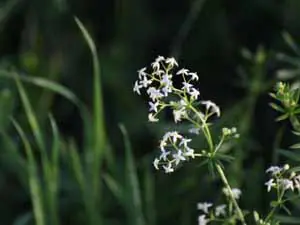
|
Hedge Bedstraw is also known as 'False Baby Breath' as it resembles the wildflower. As its more common name suggests, you can find Hedge Bedstraw in shaded areas. Included in: Shaded Areas |
Hedge Parsley
| Anthriscus sylvestris |
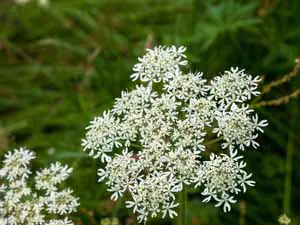
|
Hedge Parsley buds have small umbels of pretty purple flowers and are not dissimilar to Cow's Parsley in appearance. This wildflower is fond of shaded conditions where it thrives. Included in: Shaded Areas |
Kidney Vetch Wildflowers
| Anthyllis vulneraria |
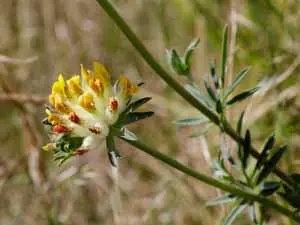
|
Kidney Vetch is a bright yellow budding wildflower that sometimes gets the name Woundwort. Although this isn't the nicest nickname, it was once used for treating ailments and, of course - wounds. Included in: Heavy Clay, Sandy Soils, Bees & Pollinators |
Lady's Bedstraw
| Galium verum |
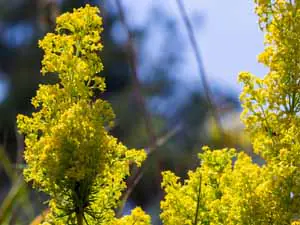
|
Lady's Bedstraw used to be used in bedding due to its soft and springy texture! This is definitely a wildflower you'll want in your meadow... when you walk past, it smells of honey. Included in: Sandy Soils |
Lords & Ladies
| Arum maculatum |
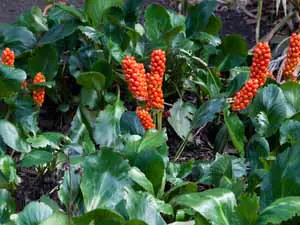
|
Lords & Ladies sprout red-orange berries and are perennial wildflowers. This wildflower particularly loves the shade, so if you have a bald & blind spot in your garden - it'll fit right in! Annual or Perennial? Perennial Included in: Shaded Areas |
Meadow Buttercup
| Ranunculus acris |
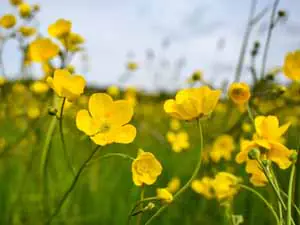
|
Meadow Buttercup is a bright yellow perennial with cupped golden yellow petals that give it its name. Meadow Buttercup grows taller than the buttercups you typically find on your lawn and makes a bright addition to your wildflower meadow. Included in: Heavy Clay, Meadow Magic, Flowing Meadow |
Meadow Sweet
| Filipendula ulmaria |
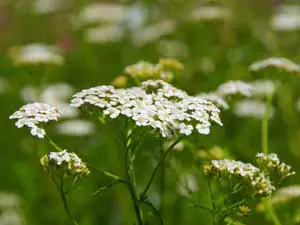
|
Meadow Sweet produces frothy clusters of sweet-smelling white wildflowers. It can be found and favours woodland-shaded areas with damp soil. Included in: Heavy Clay, Shaded Areas |
Musk Mallow
| Malva moschata |
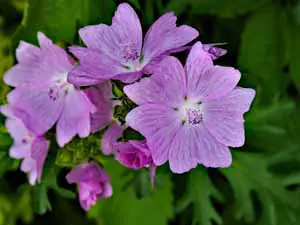
|
Musk Mallow is a light pink perennial that sits open and welcomes bees to land. Its easy-to-access pollen makes it the ideal flower for attracting bees, alongside its sweet, musky scent that invites them to pop in for more than just a pit stop! Included in: Bees & Pollinators |
Oxeye Daisy
| Leucanthemum vulgare |
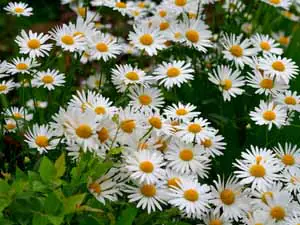
|
Imagine the daisy chain these would make! Oxeye Daisy is the largest member of the daisy family, and its almost flat surface makes the perfect landing pad for bees and pollinators. Included in: Flowering Meadow, Heavy Clay, Sandy Soils, Meadow Magic, Bees & Pollinators |
Ragged Robin
| Lychnis flos-cuculi |
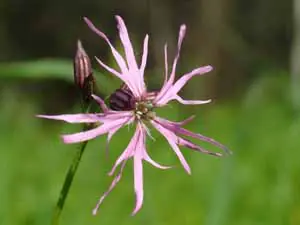
|
Ragged Robin is a pretty-in-pink perennial with starburst petals; its bright colours and nutritious nectar make it a fan favourite of bees and butterflies alike. Included in: Shaded Areas, Heavy Clay |
Ramsons
| Allium ursinum |
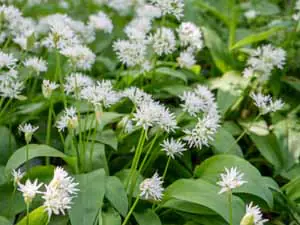
|
Ramsons are also known as Wild Garlic! You'll know if you have this one in your garden immediately by the heady garlic scent it produces. Included in: Shaded Areas |
Red Campion
| Silene dioica |
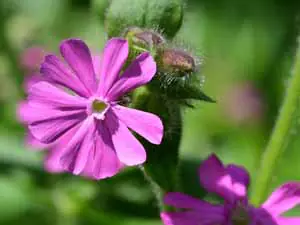
|
Red Campion has hot pink petals that make for quite the show-stopper in your wildflower meadow and can typically be found in woodland areas. Red Campion begins to flower once bluebells begin to fade, so if you notice this happening in your wildflower sward, you can begin to look forward to their fuschia blooms! Included in: Meadow Magic, Bees & Pollinators, Flowering Meadow, Shaded Areas |
Red Clover
| Trifolium pratense |
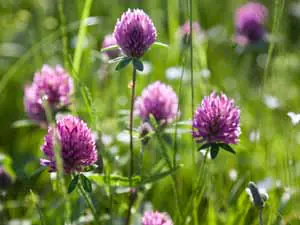
|
Red Clover is a popular perennial that, despite its name, is actually purple! Its dome-shaped flowers are relatively low-growing, which makes it the perfect fodder food for livestock, but it is also a fan favourite of weary bees who need feed a little closer to the ground. Included in: Bees & Pollinators |
Ribwort Plantain
| Plantago lanceolata |
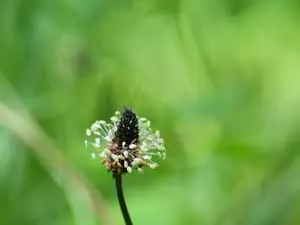
|
Although not the brightest wildflower, Ribwort Plantain certainly adds a natural diversity to your wildflower meadow. Its tiny white buds provide food for bees and pollinators, whilst its seeds are great for Goldfinches. Included in: Flowering Meadow, Heavy Clay, Meadow Magic |
Rough Hawkbit
| Leontodon hispidus |
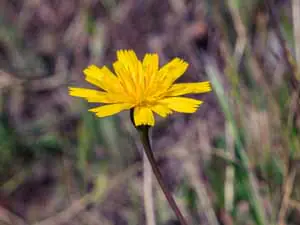
|
Rough Hawkbit is a dandelion-like wildflower that actually belongs to the daisy family! It is a big fan of well-drained soils, so it's the perfect addition to our Sandy Soils seed mix. Included in: Sandy Soils |
Salad Burnet
| Sanguisorba minor |
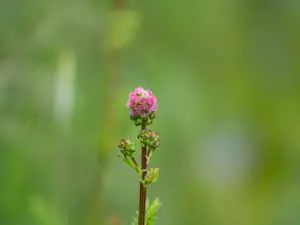
|
A perennial wildflower with toothed leaves and pink flowers. Its leaves, when crushed, smell like cucumber and used to be used in salads! Included in: Meadow Magic, Flowering Meadow |
Self Heal Wildflowers
Prunella
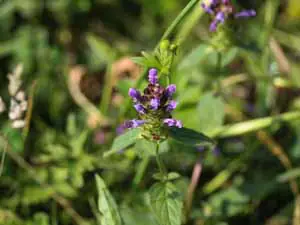
|
As its name suggests, Self Heal was typically used in herbal medicine to stop bleeding and heal wounds - we're not too sure we can vouch for that, but it does bud pretty purple flowers! Included in: Meadow Magic, Flowering Meadow, Heavy Clay |
Small Scabious
| Scabiosa columbaria |
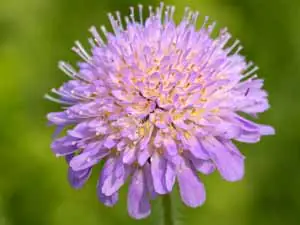
|
Although small in size, this pretty wildflower packs a purple punch in amongst any wildflower sward! Another pincushion flower, it is ideal for bees and pollinators to rest and revitalise on. Included in: Bees & Pollinators |
Sneezewort
| Achillea ptarmica |
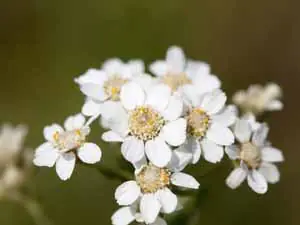
|
Sneezewort is an umbrella-like perennial that is related to Yarrow. Its pretty white petals face downwards, creating an umbrella and allowing bees and pollinators to access and enjoy its nectar easily. Included in: Heavy Clay |
Sweet Cicely
| Myrrhis odorata |
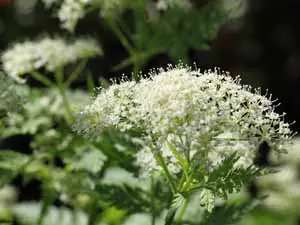
|
Sweet Cicely is an aromatic wildflower that, as you may have guessed, smells sweet. This alone makes it very attractive to bees and pollinators, but its tens of tiny white buds also help! Included in: Shaded Areas |
Teasel Wildflower
| Dipsacus fullonum |
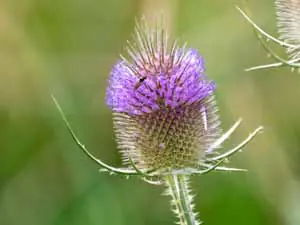
|
When in flower, Teasel is great at attracting bees as it becomes a dome of small purple petals with spikey leaves that are handy to land on and hold on to! Whilst this wildflower is great for bees, when it isn't in bloom, it's also great for birds, particularly Goldfinches, who feast on its seeds. What colour is it? Purple Included in: Bees & Pollinators |
Vipers Bugloss
| Echium vulgare |
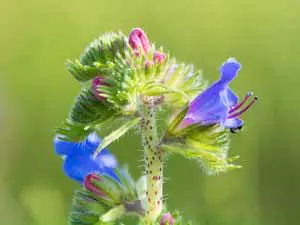
|
The electric blue blooms of Vipers Bugloss are irresistible to bees, and as its stamens stick out, they're extra easy to get to. Offering a pop of colour to your meadow, you can be sure that this wildflower is a tourist attraction for bees far and wide. Included in: Sandy Soils |
Weld
| Reseda luteola |
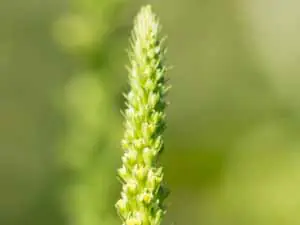
|
Weld sprouts teeny tiny cream buds and tends to appear near footpaths. Although it may not have as much flora as other wildflowers, the spikes on its small flowers are an excellent source of pollen and nectar for butterflies and bees. Included in: Sandy Soils |
White Campion
| Silene latifolia |
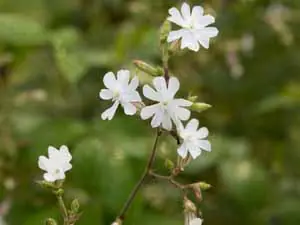
|
The white sibling of Red Campion, this wildflower still holds it on with its lengthy, rayed petals. At night, it is said to produce a clover scent attractive to many bees and pollinators once the sun rises. Included in: Meadow Magic, Bees & Pollinators, Shaded Areas, Heavy Clay, Sandy Soils |
White Clover
| Trifolium repens |
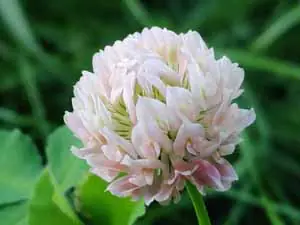
|
White Clover is a great food source for bees and pollinators who can enjoy its nectar from a slightly shorter height. Its dome flowers. Included in: Bees & Pollinators |
Wild Carrot
| Daucus carota |
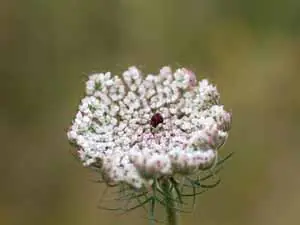
|
Part of the carrot family, wild carrots smell like carrots but are not the kind of ones you would want to eat. Its low nutrient and drought-tolerant abilities make it ideal for sandy soils. Included in: Sandy Soils |
Wild Mignonette
| Reseda luteola |
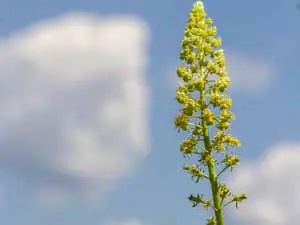
|
Similar to the Weld plant, but much shorter and look like small toy rockets launching into the air. Included in: Sandy Soils |
Wood Avens
| Geum urbanum |
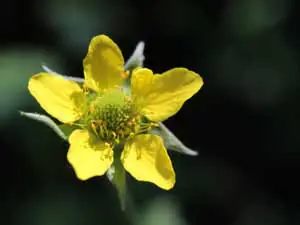
|
Wood Avens is a species of wildflowers that can be naturally found in dark and warm spaces, and it brightens them with their yellow star-like petals. Included in: Shaded Areas |
Wood Sage
| Teucrium scorodonia |
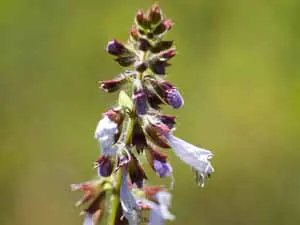
|
Although it may resemble the herb sage, this wildflower leaves aren't the best for cooking - but its white flowers, which are occasionally purple, are the best for admiring! Included in: Shaded Areas |
Yarrow Wildflowers
| Achillea millefolium |
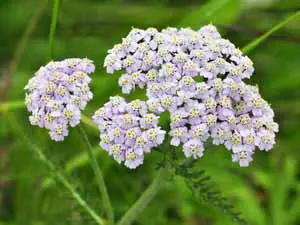
|
Yarrow produces clusters of white, small-petalled blooms. It is an aromatic perennial, making it particularly attractive to bees and pollinators who are enamoured by its sweet scent. Included in: Heavy Clay, Sandy Soils, Bees & Pollinators |
Yellow Flag
| Iris pseudacorus |
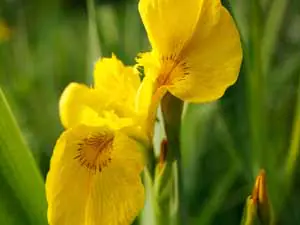
|
Yellow Flag is the common name for Yellow Iris, a perennial wildflower that is a tripod of hooked yellow blooms. It enjoys damp conditions, so it can often be found on the forest floor. Included in: Shaded Areas |
Yellow Rattle
| Rhinanthus minor |
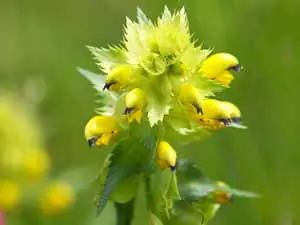
|
Yellow Rattle can be used in existing meadows where meadow grasses have taken over. It helps to weaken these grasses to allow other wildflowers to flourish and does this by locking its roots to those of the grasses, therefore lessening their abundance. Included in: Sandy Soils |
If you have any questions about the wildflowers included in this guide, about our wildflower seed mixes or anything in relation to adding a pop of colour to your garden, please get in touch; we are always happy to help.
